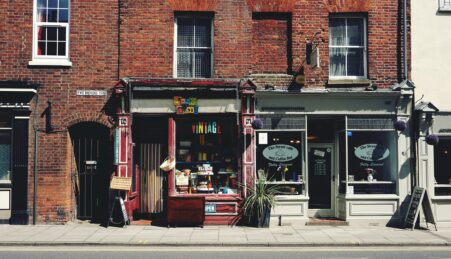
Humanity Hallows Issue 6 Out Now
Pick up your copy on campus or read online
By Pierangelly Del Rio Martinez
Hosted by Humanities in Public Festival, the Red Cities Walk presented an evening that aimed to pay tribute to and reflect upon the shadow of history left in the Northern Powerhouse, and explore how events marked and shaped the sociopolitical trajectory of Manchester and Salford.
An exploration of the area’s rich history and radical past, the walk visited many iconic spots and landmarks. Attendees gathered in the People’s History Museum, known for being the national museum of democracy. This proved to be a perfect starting point for the tour, being located near the border that divides both cities.
To start the tour, the public was introduced to the slogan the museum has adopted: “There have always been ideas worth fighting for,” before entering one of the main galleries, which explores Manchester and Salford’s past and the sociopolitical battles in which their people engaged in the past couple of centuries. From the days of the industrial revolution, to the reformers and lives of voters and workers, the North’s past was narrated as attendees walked across the gallery’s halls.
“A long time ago Great Britain was ruled by a group of powerful people,” narrated the guide, referencing one of the many quotes from the gallery’s walls, which caused a couple of laughs from the public who felt nothing has really changed since then. What followed the quote was an image of the Peterloo Massacre, a tragedy that occurred in 1819 as people rebelled due to the chronic unemployment and famine present during the time. As a result, 60,000 to 80,000 gathered at St. Peter’s Field; 400 hundred were injured and 15 killed.
This was not the last sign of revolution in the North, and, as the tour walked through the gallery, we were reminded of the most prominent groups, who sought power in a society ruled by the few privileged classes. Inevitably, organisations such as the Chartists and the Suffragettes, who fought for the rights and political representation of working class men and women respectively, were mentioned.
Towards the end of the tour, fascism and anti fascism in Britain were discussed, looking at some pictures of anti- Semitic graffiti in East London, which depicted the rise of xenophobic sentiment and fascism in England before the holocaust. Equally, concerns about the rise of fascism in Europe spiked movements that sought to block its influences in Britain, by protesting against Oswald Mosley, leader of the BUF (German British Union of Fascists) and sending troops to fight in the Spanish civil war.
After the tour through the main gallery came to an end, the group left the museum and walked towards Salford. Historian and Journalist Tony Flynn took command of the tour to talk about the history behind some emblematic places and also apparently irrelevant spots across Chapel Street found during this trajectory.
One of the first stops was the old Salford Town Hall, where what is known as the Bexley Square Battle took place in October of 1931. In front of the building, now a peaceful square with several pubs, Mr. Flynn narrated the events: “It was the largest public protest ever seen in Salford. 10,000 people mainly unemployment men and trade unionists marched from the Hyndman Hall in Liverpool Street, protesting anti government cuts, which is what is going on today basically.”
He added: “The men marched past the cathedral, stopped here. A line of policemen stopped them, they weren’t supposed to be here, it was a peaceful protest, no trouble at all.”
However, what was meant to be a peaceful manifestation quickly became a violent clash between protesters and police, as commemorated on a red plaque, which can be seen next to the building’s doors.
A few minutes later, the next destination was reached. This was formerly known as the Salford Royal Hospital, rebranded as the Salford Royal Hospital Trusts and, finally, turned into apartments after its closure: “May 2nd 1941, German bombers once again shot Manchester and Salford …They dropped a landmine on the hospital behind me. The landmine ripped through the building and killed 14 nurses.” A memorial can be seen from across the street to commemorate the losses.
After passing Salford University and the old fire station, one of the last stops was the Working Class Movement Library. Attendees were invited to look around and explore the open areas of the building, branded as one of “the most unusual libraries of the world.” The place was brought to life during the 50s, starting as a personal collection by Edmund and Ruth Frow. The library quickly expanded and now it holds records of over 200 years of the campaigns and social activity of the ordinary people, while also paying tribute to prominent figures such as Friedrich Engels (writer of The Condition Of The Working Class In England) and his friend and frequent Manchester visitor, Karl Marx.
At the end of the evening, the attendees got the opportunity to share drinks and their knowledge of Manchester and Salford’s history during a Pub Quiz. The Red Cities Walk was an event that reminded us of the rich and tragic history of the North and the lives of the people who took part of it.
For more from Humanities in Public, visit mmu.ac.uk/hip/






Leave a reply